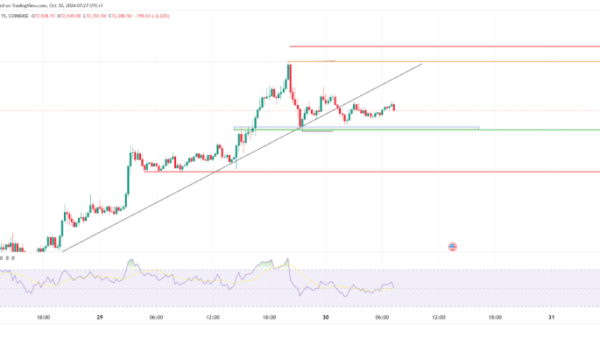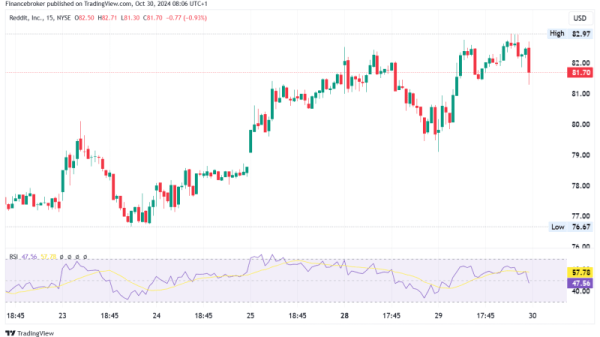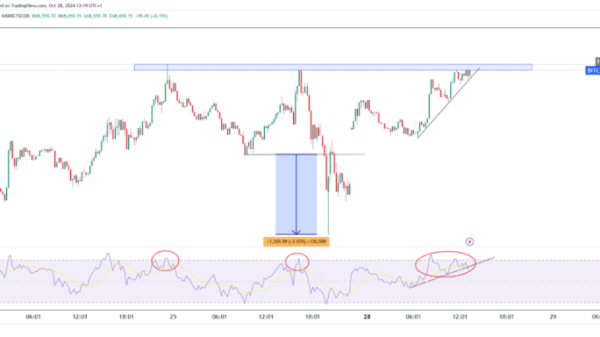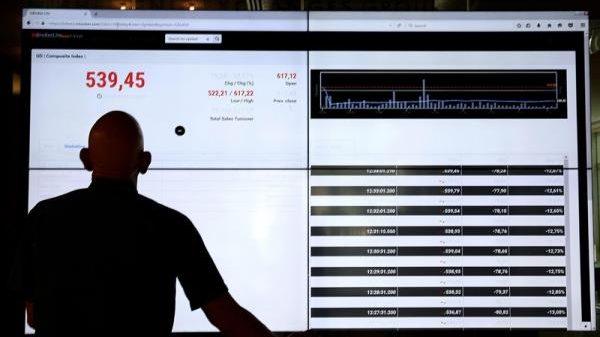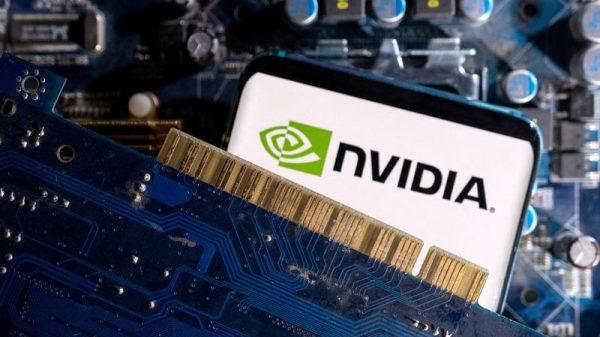Check Point Software Technologies Ltd. (NASDAQ:CHKP) reported a strong third quarter in 2024, with CEO Gil Shwed and CFO Roei Golan presenting a positive outlook driven by strategic acquisitions and product demand. The company saw a 7% year-over-year revenue increase to $635 million and a non-GAAP EPS rise of 9% to $2.25.
Subscription revenue grew by 12%, and calculated billings increased by 6%, despite some deals being postponed to the fourth quarter. The earnings call also revealed optimism for the fourth quarter and the upcoming year, with a focus on the Infinity platform and the recent Cyberint acquisition enhancing security operations capabilities.
Key Takeaways
Check Point Software announced a revenue of $635 million in Q3, a 7% increase year-over-year.
Non-GAAP EPS grew by 9% to $2.25.
Subscription revenue rose to $277 million, a 12% increase.
The Infinity platform now constitutes 15% of total revenues.
Harmony Email surpassed $100 million in annual recurring revenue (ARR).
The Americas, EMEA, and APAC regions reported revenue growth of 3%, 7%, and 17% respectively.
The company completed the acquisition of Cyberint for $186 million.
Full-year revenue guidance remains at $2,475 million to $2,625 million, with an EPS range of $9.05 to $9.15.
Company Outlook
Check Point maintains a positive outlook for Q4 and 2025, with strong demand and strategic acquisitions driving growth.
Full-year revenue guidance is unchanged, and Q4 revenue is projected to be between $675 million and $715 million, with EPS between $2.60 and $2.70.
The company anticipates significant impact from SASE offerings on revenues starting in 2025.
Bearish Highlights
Some deals were postponed to Q4, impacting calculated billings.
Operating expenses increased by 9% due to workforce investments and acquisitions.
Revenue recognition volatility due to the flexible billing model of Infinity.
Challenges in the European market were acknowledged, particularly during summer months.
Bullish Highlights
Infinity platform and Harmony Email are driving strong growth.
The Americas region showed a healthy sales pipeline and positive deal flow.
The Channel Partner Program launched earlier in the year received positive feedback.
The company is exploring opportunities to secure AI infrastructure with NVIDIA (NASDAQ:NVDA)’s embedded DPU chips.
Misses
Despite overall growth, there was an 8% growth in Remaining Performance Obligations (RPO) in Q3, down from 10% in Q2.
Revenue recognition risks associated with Infinity deals may defer some revenues to 2025.
Q&A Highlights
Management discussed the healthy sales pipeline in the U.S. and potential market share gains.
Recent acquisitions and investments in new offerings like SASE are expected to drive future double-digit growth.
The Cyberint acquisition’s impact on Q4 revenues is expected to be minimal.
The company is cautiously optimistic about its growth trajectory, with a focus on network security, email security, and SASE solutions.
Check Point Software Technologies Ltd. demonstrated resilience and strategic foresight in its third-quarter earnings call. With a strong emphasis on product innovation and strategic acquisitions, the company is well-positioned to meet the increasing demand for cybersecurity solutions and maintain its growth momentum into the next fiscal year.
InvestingPro Insights
Check Point Software Technologies Ltd. (CHKP) continues to demonstrate financial strength and market resilience, as evidenced by its recent earnings report and complementary data from InvestingPro. The company’s impressive gross profit margin of 88.62% for the last twelve months as of Q3 2024 underscores its operational efficiency, aligning with the strong performance reported in the earnings call.
InvestingPro Tips highlight that Check Point “holds more cash than debt on its balance sheet,” which supports the company’s ability to fund strategic acquisitions like Cyberint and invest in growth initiatives. This financial stability is crucial as Check Point positions itself for future expansion in areas such as SASE offerings and AI infrastructure security.
The company’s aggressive share buyback program, another InvestingPro Tip, reflects management’s confidence in Check Point’s intrinsic value and commitment to returning value to shareholders. This aligns with the positive outlook presented by CEO Gil Shwed and CFO Roei Golan for Q4 and beyond.
Despite recent market volatility, with the stock taking “a big hit over the last week” according to InvestingPro Tips, Check Point’s fundamentals remain strong. The company’s P/E ratio of 22.61 (adjusted for the last twelve months as of Q3 2024) suggests that investors are still pricing in growth expectations, which is consistent with management’s optimistic projections for the Infinity platform and new security offerings.
For investors seeking a deeper understanding of Check Point’s financial health and market position, InvestingPro offers 8 additional tips beyond those mentioned here, providing a comprehensive analysis to inform investment decisions.
Full transcript – Check Point Software Technologies Ltd (CHKP) Q3 2024:
Kip Meintzer: Greetings and welcome to the Check Point Software 2024 Third Quarter Financial Results Video Conference. I’m Kip Meintzer, Global Head of Investor Relations, and joining me today are Founder and CEO, Gil Shwed; and Chief Financial Officer, Roei Golan. Before we begin, I’d like to remind everyone that the conference is being recorded and will be available for replay on our website at checkpoint.com. During the formal presentation, all participants are in listen-only mode to be followed by a Q&A session. During the presentation, Check Point’s representatives may make forward-looking statements. Forward-looking statements generally relate to future events or our future financial or operating performance. These statements involve risks and uncertainties that could cause actual results to differ materially from those projected in the forward-looking statements. Any forward-looking statements made speak only as of the date hereof, and Check Point undertakes no obligation to update publicly any forward-looking statements. In our press release, which has been posted on our website, we present GAAP and non-GAAP results, along with a reconciliation of such results as well as reasons for our presentation of non-GAAP information. If you have any questions after the call, please feel free to contact Investor Relations by e-mail at kip@checkpoint.com. Now I’d like to turn the call over to Roei Golan.
Roei Golan: Thank you, Kip, and thank you, everyone, for joining the call. One moment, I’ll open presentation. Can you see my…
Unidentified Company Representative: You’re on the right. Yes.
Roei Golan: Yes, yes.
Unidentified Company Representative: …on slide. You’re on the right.
Roei Golan: Yes. So can you see now?
Kip Meintzer: Yes.
Unidentified Company Representative: Wonderful.
Roei Golan: Okay, great. Thank you. Thank you. So we had a very good quarter. We’ll start with the revenues and EPS. During the third quarter, our revenues grew by 7% to $635 million, $3 million above the midpoint of our projections. Our non-GAAP EPS grew by 9% to $2.25, $0.01 above the midpoint of our projections, so overall very good results. Going further into our revenues and our business, so as I mentioned, the revenues grew by 7%, our subscription revenue grew by 12% to $277 million. The calculated billing reached $562 million, which represents 6% growth year-over-year, while our current calculated billings grew by 5% to $563 million. The calculated billings this quarter was affected by several deals that were pushed from Q3 to Q4 that we expected them to close by September 30 were pushed to Q4 and mainly in Europe and we do expect that this will provide us a benefit of approximately 3 points to the billing in Q4 as some of them were already closed in October, and the majority will be closed before end of the year. So that’s, I think, important to mention regarding our billings. As for the revenues, revenues, as I mentioned, grew by 7%, that was driven mainly by product and subscription revenues that grew to $396 million. That’s mainly driven from strong demand for our Infinity consolidated platform, our Harmony Email that’s keep do – have this strong demand. And we did see also demand and we see the product revenue grew by 4%. So we see an increase also in the demand for our appliances. I mentioned the Infinity. Infinity had another great quarter. It continued to flow in accelerated way to the revenues. Another quarter with strong double-digit growth year-over-year, becoming more and more significant to our total revenues which now is approximately 15% of our total revenues. And we see more and more customers, existing customers and new logos that adopting our platform, answering their needs under one umbrella of products and services. Now let’s look at the revenue by geos. So America had – in terms of revenues, America, it consists 41% of our revenue then grew 3%. It is important to note that in terms of new business bookings, actually, America had a very good quarter, continued the first two quarters in 2024 with a double-digit growth in new business. EMEA revenues were up 46% of our total revenues and they grew by 7% year-over-year. I mentioned already about the billing effect in EMEA. So it’s also – again, we did see some deals that were pushed from Q3 and Q4 in Europe. But again, we expect that, that will be closed by the end of the year. And in APAC, we did see a 17% growth in revenues. Also in terms of new business, APAC had a very good quarter. So I think – yes, so that’s the revenues by geographies. Moving into our P&L. So our gross profit was increased by 5% to $563 million representing 89% gross margin. Our operating expenses increased by 9% to $289 million. This is mainly as a result of our continued investment in our workforce organically and also the additional expenses related to – with the acquisition of Perimeter 81 that we closed in the end of Q3 last year. Our non-GAAP operating income was $274 million, while our net income grew by 5% to $255 million and the EPS was – the non-GAAP EPS was $2.25, grew by 9% year-over-year. Our GAAP EPS was $1.83. As for the cash flow and our cash positions we had a very strong operating cash flow. We closed the quarter with $249 million of operating cash flow growth compared to last year. Our cash balances amounted to $2.9 billion, while also this quarter, we closed the acquisition of Cyberint and the net cash paid for this acquisition $186 million. Gil will have more about this acquisition in his slides. And we continue to do our buyback with – we purchased through the quarter of $325 million of shares at an average price of $182 per share. To summarize our financials, so again, revenues and EPS, both above the midpoint of our projections. Our revenues accelerated to 7%, mainly driven by strong Infinity and Harmony emails performance and another quarter with strong profitability, strong operating cash flow. So in general, again, a good quarter for us in Q3 and looking at for Q4. Gil?
Gil Shwed: Thank you very much, Roei. And I’m very excited to be here and share some of the insight on Q3, which actually was a very good quarter. So I think you already heard from Roei. Revenues, EPS, we were above the midpoint of our projections. I’ve looked at almost every financial metrics, and they all look pretty good. think we’ve mentioned the Infinity platform continued strong demand. The Harmony e-mail, which reached over $100 million in ARR, maybe speak more about that, which I think is something very good. And I think what’s more important is that we’ve continued to grow and continue to invest in additional area. So I think one area that’s very important and a focus of this quarter is expanding our Infinity global services. That’s a very important unit that we have over 3,400 customers, which is pretty big on that. And the main one and the main step that we did here was to get into the SOC market, the security operation with the [indiscernible] acquisition, which is all about freight intelligence and I’ll expand what it means. It does show you that we are pretty consistent about making acquisition, expanding, trying out new things. And I think actually you’ll see even some examples actually, most of them actually work pretty well. So this is our tenth acquisition in just 5 years. Looking a little bit on customers. You can see that we continue to win deals. This is a combination of new customers, existing customers, but you see the names. These are impressive names of customers that allowed us to share their names, and you can see it from all over from the Deutsche Borse in Germany to Mayo Clinic in the U.S. to U.S. Department of State, which chose us to protect some of your most important assets of the United States, Porshe Infromatik in Germany, automotive Siemens, actually, this is Siemens America. So you see customers embrace checkpoint customers like what we do. And this is reflected both in growing existing customers, winning new customers and winning in many different categories. In the last few quarters, we spoke a little bit about wins in the public sector, and that continues to be important. And you see here, over 40 countries, 65 new government agencies in the public sector, that’s just from the third quarter, but it’s not just public sectors, financial services, 40 new customers in 23 countries, health care, 28 new customers in 17 countries. And I think the list goes on in all in additional sectors just to demonstrate the positive success that I think we have and the potential that we have because I think these numbers can be much, much higher in the future. I’ve talked a little bit about e-mail. And e-mail has been one of the most critical entry points for malware into organization. We protect the network, and I think – and that’s the most important element. But e-mail continue to be a vector, which is connected to the network, where malware getting to the organization. And we’ve realized a few years ago that it’s experiencing quite interesting transition in the marketplace from on-prem e-mail to cloud-based e-mail and that’s a big opportunity for us. And that’s where we acquired Avanan – that’s why we acquired Avanan to get into that space. And through that space, we became one of the fastest growing and providing the best security for e-mail. And you can see we’ve – in three years, we’ve quadrupled this business. Our ARR now is way over $100 million. We are getting more and more large enterprise customers to buy into this platform and the pipeline is good and the field is very, very positive about that. You can see high double-digit growth year-over-year, well over 50% growth in the amount of business that we do so this is something quite positive and quite good to see in our business, where actually our strategy works, the platform works and our acquisition work. So thanks for everybody that made that happen. And this may be the next one, which I hope is going to be another example like that. And that’s expanding our portfolio into the SOC into the security operations center. For us, I think it’s very important strategically to get – to be not just on the network, not just on the cloud, but also to be in the center with the SOC. And we found a very unique opportunity here, and that’s the external threat management, external exposure platform. So we acquired Cyberint in the mean to expand what we do. We have over 180 employees that just joined Check Point with Cyberint way over 200 enterprise customers with some very big names, Fortune 500, even Fortune 100 and I think even Fortune 50 names amongst the customer list, a fast-growing company, still relatively small, but I think very promising. So what we actually do, Cyberint scans the organization assets. It can be web servers that are all over the internet, not just the main network. It can be the main network from the company. And it’s mainly many, many other assets that we don’t see. Like what people write about us in the dark web. What people write us on the – not dark web, on the open web. And there, there are amazing things you can find. For example, employees that lost their credentials. So somebody has an information on how to get into our company because some employee forgot their username and password. There can be many, many different resources like that, hidden certificates, cloud keys. A lot of things that get kind of, I would call them lost, they’re not all lost, sometimes they are being stolen, sometimes they are being manipulated because they were stolen from third parties, not from our employees, but from third parties and they find themselves into the dark web, and people can use them to attack us. So what Cyberint does is contents constantly scan our assets, our open web and the dark web. Find these kinds of vulnerabilities, checks them out and gives us the real-time report of this is the things you need to close. Now all of that is an interesting market sector. That’s what Check Point does because we always say that we are about the best security and we are prevention, not about reports. And that’s what we want to create together with the Cyberint acquisition, turning it into actual prevention. So when we see that an employee credentials were compromised, if it’s really were compromised credentials, we can lock down the accounts. If we see maybe a server on the internet that’s actually imitating our company, that’s by the way, another asset that Cyberint find companies that copy a company website and use that to trick their employees, we have the ways to do takedowns. That’s a very impressive operation that something within minutes can do a takedown of a malicious asset like that or impersonating asset like that. We can – in the future if we want to be able to turn on network security capabilities and many other capabilities to move that from here is a report, and here is more work for you, Mr. CISO to actually the opposite. Here is a report, and here is the 50 things we did for you in the last day, in the last week, in the last month, to close vulnerabilities, real vulnerabilities, not just potential vulnerabilities. And I believe that’s a play on triple different things. It’s a play on managed services. It’s a play on the SOC. It’s a play working with the CISO. And it’s a play mainly for the platform and the collaborative security, how we demonstrate how we take different elements of the cybersecurity space and show that they can actually work together and generate more value. So I’m very excited about that acquisition. We completed it, I think, on the last few days of the quarter, so we didn’t have much financial impact on last quarter. But hopefully, in the next few years, it will have a bigger and bigger impact. And hopefully, we’ll be here couple of years from now, and we’ll be able to show similar results to the ones that we had with e-mail and the ones that we’ll have on SASE and a few other areas that I believe presents great addition to our platform and great growth potential for Check Point. So that’s the Cyberint acquisition. And if I need to summarize, I think overall, we had very solid quarter, very good quarter. Revenues and EPS above the midpoint of our projection, Roei also mentioned that in the last few quarters, we are seeing – this is the internal indicators that I’m seeing not just the revenues that you see outside very positive indicators in the Americas, in the U.S., which is the most important market. So we are seeing some good signs there. Infinity delivers continued strength, Harmony made exceeded the $100 million ARR, and we expanded our SOC offering and transforming security operation and threat intelligence through the Cyberint acquisition. So overall, I think that we had a very good quarter, very proud of what our team did and even more excited about what the team can achieve moving forward. So thank you very much. And I think before we open the call for questions, maybe a little bit about projections for the fourth quarter and for the full year. So for the full year, we are actually not changing our guidance within – we’re well within the range that we published before. Maybe I’ll start with the full year. That’s a little bit more complicated but let’s start with the complicated. You see obviously that the range for the year has narrowed. The range for the year has went up. I mean, if we started the year from $2,475 million to $2,625 million in revenues. It’s now on the right side of the center and the midpoint is rightsized on where we started the year. So I’m very proud that this year with all the things that we’ve done with all the changes, with all the challenges that some of the markets faced we so far haven’t faced too much of that. We are not going to just finish at the midpoint, but finish above the midpoint, and that’s true to our revenues, and that’s true also to our EPS. We started the year with a broad range for EPS from $8.70 to $9.30, and we are going to finish it between $9.05 to $9.15, well over the midpoint that we started the year and that actually you can calculate from that what’s the range for the quarter. But the range for the quarter is going to be very consistent with our original plans, revenues $675 million to $715 million, earnings per share between $2.60 to $2.70. GAAP EPS is expected to be approximately $0.45 less. You know my regular caveat, that projecting the future is always very challenging. High-level of uncertainty, results can be better, results can be worse. But I do feel that we are getting into the fourth quarter with healthy pipeline, energetic workforce, a lot to offer, a lot of things coming not just in the sales pipeline, but in the product pipeline, new innovation, new acquisitions, and Q4 is going to be a very interesting and exciting quarter for us, and I’m looking forward to that. So thank you very much, and I think we can open the call for your questions. Thank you.
A – Kip Meintzer: All right. As always, please keep your questions to one, if possible. And first up, we’ll have Shaul Eyal, followed by Adam Tindle. Shaul?
Shaul Eyal: Thank you. Good afternoon. Gil, on the billings miss, I get the regional softness in EMEA given a typical sleepy quarter. Did you have any eight-digit contracts? Was it several seven-digit related transactions? And maybe I can squeeze another one. Since you’ve announced that Doug replacing you, I don’t know if you start in December, one of the prevailing views on the Street, at least that we’ve been getting, is that given the Doug’s from VC background, Kaplan is likely to embark on an M&A spree, accelerating growth, mid-teens, lowering operating margins, mid-high 30s, you’ve got to see the numbers out there. Interested in hearing your views along these lines. Thank you for that.
Gil Shwed: So it’s two separate subjects. I would try to answer the billing thing. We are, by the way, not managing too much of the billings. We are becoming more and more sensitive of that because U.S. analysts watching that, we are trying to build a healthy pipeline of good deals. If we can give customers immediate billing, it’s good if we can actually let them use the fact that we are not short on cash and give them a long-term billing, which lower billings. It’s also good for us as long as we get good healthy business, and I think that’s what we are doing. We are more and more sensitive to that. I think Roei did mention that we had a couple of deals that slipped from Q3 to Q4, no impact on the financial results. This is deals that didn’t impact the revenues or didn’t impact – didn’t have much impact on the immediate results. It’s actually should have come forward. And some of them already arrived in the beginning of October. So I won’t look at it as anything – I hope it’s not anything that’s indicating for something we should be aware of. And I think, overall, I’m happy with the results. About the transition, over the past few months, I’m working on a transition plan with Nadav. It’s working extremely well. I’m very happy about everything we’re doing. I’m very happy about the potential. I think we are going to embark on new expansion, new strategies, new things. But for the immediate-term, I’m not expecting any major changes. I think we’ve done 10 acquisitions over the last five years. We’re going to do some acquisitions. I don’t think that our strategy now to be a mega acquisition that we wouldn’t have done otherwise, I think we want to keep our operational discipline. And again, my focus was never on margin. My focus was always about how we generate good security, best security, healthy growth, profitable growth. I don’t think that agenda is changing. And I think over time, Check Point will see changes, and I think that we’re going to see very positive changes in Check Point because the Nadav brings amazing energy and amazing skills that Check Point needs. So I’m super excited about that, and I’m not – and I don’t think that at least in the short-term, you’re going to see any big changes. Long-term, I think we want to – we always want to build a better future and a better strategy.
Kip Meintzer: Next up is Adam Tindle, followed by Tal Liani.
Adam Tindle: All right. Thanks. Good morning. Gil, at the end there, you talked about how you’re seeing internal indicators that we may not see as much from a reporting standpoint, but those internal indicators that you see are very positive. Wonder if you could expand on that. I know it’s probably a little too early to talk about fiscal 2025. But based on your guidance here, you’re going to finish this year at about 6% growth, which is a tougher comparison – but it sounds like those internal indicators are very positive. I wonder if that’s a level that you might be able to hold in terms of growth on a future basis. Thanks.
Gil Shwed: So most of the – first, I think if we look at the industry, we read that we all know that cyber is need that we all know that network security remains the centerpiece of security. We all see the level of attacks rising. I don’t think we mentioned it here, but on the last year, there’s been like 56%, 57% growth in cyber attacks in the U.S. and almost all over the world. So – and the attacks are becoming more sophisticated. So yes, we will need more cybersecurity. That’s a macro. We’ve also been reading some reports about potential refresh in network security and the reinforcement of the importance of network security, but that’s a little bit about macro. Within Check Point, I don’t have any strong indications for 2025. For Q4, first, I’m always careful. And this quarter, in particular, there are so many moving parts in Check Point. So I would be a little bit careful. But we started the quarter with healthy pipeline. Pipeline that justifies the projections that we give. And so I’m – what I’m saying, I’m seeing some good positive energy. I think that the U.S. market is always the best indicator and the most important market. The last few quarters have been quite positive on the deal flow that we see in the Americas, and that’s great. I don’t know if you remember, but we’ve also had management changes in the leadership of our Americas organization and so on. It’s not coming in a vacuum. And it’s too early to say if that organization is going to rise next year to its full potential, which is much higher but at least seeing two or three quarters that the U.S. performs well, it’s actually a very good indicator that shows that I hope that we are taking market share, gaining customers and fighting where we need to fight.
Kip Meintzer: Next up is Tal Liani followed by Joseph Gallo.
Tal Liani: Sorry, I need to whisper it because I’m in public space. First question is what’s your position on vendor financing. We’ve seen other companies in the space being more aggressive on vendor financing and providing financing to customers. The second one is more strategic. Roei, you spoke about double-digit growth for a while and the ability to get to double-digit growth. But the beat, you’re beating the numbers, but the beat is very dismal. It’s very minimal. And the question is, what needs to happen. You have so many products and so many acquisitions and so many refreshes. And what needs to happen for you to break this mid-single-digit growth kind of rate and get to sustainable double-digit growth. Thanks.
Roei Golan: Okay. Do you want to start, Gil and I’ll…
Gil Shwed: You’ll start, Roei.
Roei Golan: So I’ll start to what with the double digit, the second question that you had around the double digits. So when we – when I was asking, I mean, been asked about it – we’ve been asked about it for a few quarters. I think that what we’ve thought that in order to be in double digit, I think we are positioning today much better to accelerate our growth than what we’ve been in the past. And because we – first of all, we did some very significant investments. The last one that we did, not the last one because the last mine cyber, but we did a significant acquisition of Perimeter 81, we expanded also. We have a totally new SASE offering. We invest a lot, both on R&D side, on the go-to-market side. We told – we said that it’s going to take a bit time that we’re going to see to have a significant effect on our business. But definitely, that’s one of the main agents that should be – should drive us to accelerated growth and more than what – the mid-single digit that you mentioned. And again, Infinity, Infinity, we are seeing that through Infinity, we see more and more customers that are taking not only the firewall, not only the network security Quantum (NASDAQ:QMCO), they are buying more of our products. They are using, first of all, the e-mail security. Many of these customers are taking in the Infinity, the Harmony e-mail. We are starting to see in the last few quarters also customers that are taking the Harmony SASE. So I think, again, it’s something that that’s the – that’s how we should – I mean, that’s the main driver that should bring us to accelerated growth. The second question, again, what was the – the first one that you asked?
Tal Liani: Vendor financing.
Roei Golan: Financing. So actually, again, it’s – we are – I mean, we’re talking a lot about Infinity. The thing with Infinity is the flexibility also that we are providing to our customer, the flexibility, it’s not only about when they are using their allowances and when they are taking – when they’re using their license also around the billing terms. So we have – we’ve seen more and more Infinity agreement that there are some flexibility – there are some bidding terms that are more flexible. I don’t want to call it financing, but they are much more flexible than a standard deal. So we don’t see, we don’t do any financing. But again, we are providing, I think that with our cash position today and the strength of our balance sheet, we definitely can be more flexible in terms of billing terms, and that’s what we are doing today, mainly with Infinity. So that’s my answer for that.
Kip Meintzer: Anything else, Tal?
Tal Liani: Got it. Thank you.
Kip Meintzer: Next up is Joseph Gallo, followed by Brad Zelnick.
Joseph Gallo: Hey, guys. Thanks for the question. Maybe a follow-up on the Perimeter 81 comment. How are you tracking towards having that fully integrated in 4Q. How is the pipeline building there? And then when you talk to customers, what is the willingness, particularly in the high-end enterprise, what is the willingness to eventually adopt that SASE solution? And when can we expect that to happen? Thanks.
Gil Shwed: We’re actually seeing some positive traction in Perimeter 81. If you remember, we started a year ago. I think it’s a very important element for our network security platform to have a SASE cloud-delivered security as part of the platform. We started and what we are selling it for the last year, sales are going fine, and we started by integrating. So first, I think we are doing fine on the integration time line. Second, I think last quarter, we’ve seen some Q3, we’ve seen some nice jump in the amount of quarterly sales, and that’s a very positive indicator. It’s still small, so I’m not pointing it as you know the big thing or the big achievement. But when you have sales growing in a few percent every quarter and then double-digit growth, I’m talking sequentially, it’s a very positive change in the trend, which means that it’s picking up. And for Q4, we have a few seven deal digits on that SASE platform and other way to connect to us. So overall, there is all the reasons to be optimistic about that. And hopefully, we’ll be able to even accelerate some of the things we are doing. But that’s my job as CEO is to ask everybody to accelerate their job is to do the best possible that we can and I think we’re doing a good job there.
Joseph Gallo: Thank you.
Kip Meintzer: All right. Next up is Brad Zelnick, followed by Rob Owens.
Brad Zelnick: Great. Thanks so much for taking my questions. Maybe just to start with you, Gil. It’s good to hear that you expect next quarter to see three points of benefit to billings growth, which comes from deals that slipped out of the quarter. I think it’s more like five points of growth if they hadn’t slipped from Q3. But naturally, deal slip every quarter. Is there anything specific to Check Point, the environment or competitively that explains for these deals slipping when you think about and do your root cause analysis? And maybe for Roei, we continue to hear the success that you’re having with Infinity contracts and recurring revenue products like Harmony and CloudGuard, as these continue to contribute more to the mix and what sounds like even exceeding your own internal expectations. What impact is that having on the model? And how should we think about that going forward? Thank you.
Gil Shwed: So, I think overall, we had a pretty positive quarter. I’ve looked very in-depth to analyze the quarter. And we had many regions in the world where we had some very good results. And we have a few regions in the world where we had some softness. Again, I’m talking about 2 and 3 levels beyond the big geos, even within geographies. In Americas, there were some areas that did extremely well, but in some areas that will be soft overall, Americas, U.S. was excellent for us last quarter. For example, again, I’m talking about the internal indicators. So, it’s a similar case in other territories. I think Europe in Q3 is always a challenge. On one hand, we do get business, business continued. But on the other hand, it’s very hard to change things and solve bottlenecks in Europe in the summertime when many people are on vacation. So, I think in Europe, we’ve seen some of that softness. Overall, as I said, I think we had a pretty decent result. When I look competitively, I think we’re doing fine. We’re – I think we are winning. We are seeing more. If I looked at the last few quarters, our growth in key indicators like product and billings were very good. So clearly, by the way, I’m talking all the time about cyber and cyber growth. And I think cyber is one of the healthiest sectors that we have. But we’ve clearly seen in the last two or three quarters, weakness of some of our competitors. I hope that it’s not a long-term reflection. I hope it’s maybe a result of other things. But I think that compared to that, we are actually gaining share in the core markets and that’s a positive thing. Obviously, like every time, I would like to see more growth in the market overall and more growth for Check Point.
Roei Golan: And then follow-up question, Brad, around the mix. So, we definitely see that the Harmony Email which gaining, I mean, growing very significant. We just disclosed that we exceeded the $100 million ARR – higher than $100 million ARR and definitely, it’s becoming more and more significant of subscription revenues. So, this, together with the SASE that we expect that will be more significant to us mainly from 2025 after we’re going to complete the integration. I think that’s definitely to drive our growth and should drive the subscription revenues grow. And I think that’s what we see, and we have to see the momentum with the e-mail continues and with the other products, SASE accelerating.
Brad Zelnick: Roei, I think you also was trying to acquire about timing with hardware around Infinity contracts and things along that line.
Roei Golan: Okay. So Also, it’s something that is reflected in our guidance. I have to say, what’s going on with Infinity today that Infinity is becoming, I mentioned 15% of our total revenues. In some quarters, even in the product, it can be even higher in the product revenues. The thing with Infinity – with the product revenues related to Infinity, that in standard deal when we were selling appliances, so usually, it’s – we’re getting the order and it’s being delivered, the revenues recognized close to the – when the deal is – when the order is received. In Infinity, they have the flexibility they are buying allowance – they are not buying it kind of – we’re billing them for allowance for example, for one year, and they have the flexibility whenever they want for you to pull – to utilize the allowance. And then only we can recognize revenues. So because the Infinity is becoming more and more significant to the product revenues, we have less in terms of – when we are having orders that are being recognized immediately, so that’s it’s easier to predict. But when we have orders that are full that in the control of the customer want to utilize it. So there is some kind of volatility that can have around the product revenue and when it will be recognized because we cannot recognize revenues on product when they are buying allowance – on the allowance. We can recognize only when we deliver the product.
Brad Zelnick: Thank you so much guys. Great to see you.
Kip Meintzer: All right. Next up is Rob Owens [Piper Sandler], followed by Roger Boyd.
Rob Owens: Thanks. Good afternoon and thank you for taking my question. Gil, in your prepared remarks, you did talk about new customer acquisition across different verticals and geos. And I guess the question is, are you seeing an inflection relative to new customer acquisition. It’s not something you guys have called out recently. And with those new customers, where are you landing with what products? And who are you displacing? Thanks.
Gil Shwed: It’s a good question. I think it’s across the board. Obviously, most of the new customers are still network security customers, which is good because that’s the core market and that’s where we have the highest potential to gain share. We do have e-mail as a great entry point to win some new customers, and in many cases, we want to grow it into other products as well. There’s few other examples, I think, well, on the SASE side, there’s also some area that we are winning some customers. So I think all of them exist. But having said all of that and even looking at the model and saying, we got this e-mail business, it’s great to acquire a new customer and then we can cross-sell it and upsell to it, that’s great. Still, the vast majority even of new customers is our core network security customers, and that’s, I think, a very positive thing.
Kip Meintzer: Rob, you’re on mute.
Rob Owens: Great. I guess the spirit of the question then, so where are you seeing displacement? Who do you think you’re taking share from in the core network security?
Gil Shwed: Let’s – I think we’re taking share from all our competitors, but it’s still, I think, in very small numbers that I don’t think I don’t want to brag about that. I think we can do in the future. I think, by the way, I’ll give you an example. Some of the largest customers, they adopted policies that says we’re working with dual vendors. And for both security reasons, business reasons and many other reasons, adopted the strategy when they are buying from two different vendors. I think we’re seeing in some of them that new orders are coming to us. After a few years, they try to balance it and maybe give some more orders to competitors to kind of balance the account and have a competitor with a presence in the account. Now if they get to choose who gives them the best value, who gives the best security, we are buying more and more Check Point. So I’ve seen a few examples of customers that are good loyal long-term customers that haven’t purchased new products from us for two years or three years and suddenly buying again more from us and growing with us. So that’s a positive thing. I’m trying to think about more examples, I think we’re seeing it all over. It’s not the usual names.
Rob Owens: Great. Thanks for the color.
Kip Meintzer: All right. Next up is Roger Boyd [UBS Investment Bank] followed by Hamza Fodderwala.
Roger Boyd: Thanks, Kip. Gil, you continue to talk about the importance of building around the SOC and IGS with XDR and MDR continues to sound like it’s doing well. You’ve now added Cyberint to the platform. Some of your key competitors have been a little more aggressive in their push into the SIEM [ph] and security analytics market. So just wondering your perspective on that and given all the disruption in the SIEM market, why not go after that a little more directly.
Gil Shwed: To be very honest, I think first something we’re looking at. We are trying to see what can be done and so on. I’m not sure that at this point, we have a real good opportunity to be a leader in SIEM, based on the technology that we have, based on the players that exist, based on the technologies, based on the cost structure, yes, there are some maybe inflection points in that market and changes and AI can change things, but it’s not a simple entry point. So we are there. We are playing a little bit with that with XDR and a few other technologies, but I’m not sure that that’s the market we should grab right away. Of course, if we will find some breakthrough internally or externally that can change. But at this point, I don’t think that’s our major growth. But again, I think the Cyberint on can be a very brilliant entry to the SOC with kind of something that I think has a unique value proposition and can prove to be valuable in a very short period of time.
Kip Meintzer: Thank you. Was there more to your question? Okay. Next up is Hamza Fodderwala [Morgan Stanley], followed by Shyam Patil.
Hamza Fodderwala: Great. Good morning. Thank you for taking my question. Gil, I had a question for you regarding just network security architectures in general. So network traffic has gone up by some measures, 20% plus since COVID. You launched new appliances earlier this year. We’re seeing healthy growth again in the product revenue. I’m curious as enterprises are considering refreshing some of that hardware, how long do you think this refresh can last, especially as some organizations are looking to remain hybrid and maybe on-premise for longer than we thought a couple of years ago.
Gil Shwed: Obviously, it’s taking longer than I want it to happen. I think we are seeing a healthy refresh cycle. We are getting them. We are winning them. I would have liked to see more of that coming in faster. And I think our new product line is definitely something that can show that. I mean we have more bandwidth, more capabilities everything to accommodate that growth in network traffic. We have our clustering technologies and our Maestro hyperscaling technology. So I think we are very well positioned to win a bigger share of it and to do it faster. I think, as I mentioned before, as much as I’m optimistic about our result – positive about our results optimistic about the future. I think we had a year that the year wasn’t all green for everyone. Let’s put it in a careful way this year so far. So the fact that we have growth in products and so on is actually a good indicator in the ideal here, I would like to see much higher growth based on where we are.
Hamza Fodderwala: Thank you.
Kip Meintzer: All right. Next up is Shyam Patil [Susquehanna Financial Group], followed by Gabriela Borges.
Shyam Patil: Hi guys, good afternoon. I had a question just on the go-to-market and, I guess, specifically the Channel Partner Program that you guys launched at the beginning of the year. Just curious kind of how that’s going, how that compares to kind of what you expected? And just kind of any feedback so far on that.
Gil Shwed: I think we’re getting very good feedback from everything I hear from our channel organization. We just completed a few channel conferences in different parts of the world. And I got only positive feedback. I don’t know that it has any material big impact on the results so far. But I think the sentiment from the channel is definitely becoming better and better and the feedback is all positive.
Shyam Patil: Thank you.
Operator: All right. Next up is Gabriela Borges [Goldman Sachs], followed by Saket Kalia.
Gabriela Borges: Hey, good. Thanks for taking the question, team. I want to follow up on some of the opportunity that you might have with the embedded DPU chips with NVIDIA as we get closer to some of the – as we get closer to the shipment date. How are you thinking about some of the business models that you could be deploying to be able to monetize that opportunity? Thank you.
Gil Shwed: I think it’s something we talked about. I don’t remember it was in Q1 or Q2 or the beginning of Q2, I think. That’s a huge opportunity to go and secure the hyperscalers of AI and to be on the AI hardware infrastructure. It’s in the very beginning of things. We’ve just starting to build some senior sales leadership to focus on that. We are working with NVIDIA and our AI hyperscalers to get that out. It’s too early to say what impact will it have and how big is the potential, But I think it’s a very unique value proposition that we have and something that the world will definitely need.
Gabriela Borges: Understood. Thank you.
Operator: All right. Up next, Saket Kalia [Barclays], followed by Joel P. Fishbein, Jr.
Saket Kalia: Okay, great. Hey, guys. Thanks for taking my question here. Roei, maybe for you. I think we talked about Infinity being about 15% of total revenue, and that’s clearly growing a lot faster than the overall. But I guess I’d love to talk about the other 85% a little bit. And maybe longer term, as you think about this model in the future, Infinity is clearly going to become a bigger mix. But the question is, is that going to come at the expense of the other 85%? Meaning, can the 15% and 85% both grow together? Or can – or does the 15% – does – from in an absolute dollar terms, does that 85% need to go down over time? Does that make sense?
Roei Golan: Yes. So it’s a good question. So I think definitely, it can grow together. It definitely can grow together. I can tell you that what we see with Infinity that Infinity is driving the growth. I mean it’s driving growth. So we see that more customers that are adopting Infinity, we see more growth there than what we see that customers are not adopting Infinity. It doesn’t say that the customers that are in the other 85%, we don’t see any growth. For example, we just mentioned Harmony email. Harmony email, of course, there is a portion that it’s part of Infinity. But there is a portion that it’s just sold – standalone and it’s growing very fast. Same thing with other products. So it’s a – so again, it can definitely grow along. I think that our future will be Infinity. I mean we’re seeing – we think that in the end this 15% will grow every quarter that you’re going to see more and more, you’re going to see that more significant that Infinity would be more significant to our business every quarter. And I think that’s the future of – and again, that’s the platform, that’s the future of Check Point. That’s what will drive the growth that we are looking for.
Saket Kalia: Very helpful.
Gil Shwed: I will maybe jump in and saying that when I measure the success of Infinity, there’s two things. First, how many people move to the platform and deploy more technologies and get to commit to us for longer term. And then are they actually growing because converting an existing contract with an Infinity to an Infinity contract, when you get no growth is not – it’s good from a commitment to technology, but it’s not driving that. And overall our Infinity customers are driving high growth. I think on the average, last time I’ve checked, it’s not – in the last quarter, Infinity customers were growing 20% faster than non-Infinity customers. So if I took a group of customers day one and then two years later with Infinity with existing contracts, they were kind of stable. With Infinity, they grew by 20%. And that’s why we still think that moving customers to Infinity is good, not just from a technology standpoint, but also from the value that we provide and the value that we get.
Saket Kalia: Very helpful. Thanks, guys.
Operator: All right. Up is Joel P. Fishbein, Jr [Truist Securities] followed by John DiFucci.
Joel P. Fishbein, Jr: Good morning. Just a quick question. At CPX 2024, you really spoke a lot about the CNAPP market. How integral is CNAPP to gain traction in this move to double-digit growth? And can you elaborate on where you think you are in that market? Thanks.
Gil Shwed: I think we started the year with the challenging conditions in the cloud market. I think we’ve – the last two or three quarters actually have been far more positive in terms of growing the overall cloud business. Still I think the judgment is still out. What’s the potential that we have? Which areas will we win? Will it will be more cloud network security or more CNAPP? On that, I think we did a very good job in modernizing our CNAPP product in I’ve looked – I did a deep dive into the product a few weeks ago and I was very impressed with what we got. I compared it to competitive product and I thought that we should be very proud of what we have. Still, having said all of that, there is a bigger long road to get the maximum potential for us at CNAPP. And there is a good question which I don’t know the answer whether we should focus more on CNAPP or more on other cloud technologies to win and provide value in the cloud space.
Joel P. Fishbein, Jr: Thank you.
Operator: All right, next up is John DiFucci [Guggenheim Securities, LLC], followed by Ben Bollin [Cleveland Research Company].
John DiFucci: Thanks. Gil, questions for you. You said yourself that Europe is always soft in the quarter. Was this more than usual and if so, what caused that? You mentioned some struggles of some of your competitors? Are you implying softer demand for network security in general? Or is it more incremental macro softness than you expected in Europe? Or was this simply an execution issue for those deals that slip on the part of Checkpoint?
Gil Shwed: Frankly, I don’t have the full answer and I don’t want to mislead last quarter. For example, even though Europe is usually weak in Q3, we won some giant deal in Europe which made this a tough compare. I’m not using that as an excuse and I didn’t open with that because I think the fact that we have a large deal last year means that we should have had two this year and not and not just repeat the same thing, but that’s made it a little bit tougher compare for Europe, for specific country from last year when we won a giant deal in the third quarter. And I don’t have any strong attribution, I do see some weakness with the competitive market and some competitors that are struggling that were struggling. Again, I don’t know about this quarter. I know about previous quarters, so I don’t have all the good answer. At the end of the day, I think we finished the quarter in a very positive way. Healthy numbers, all the financial numbers are right. We are tracking with orders that we think were sleeping are actually being, are being won in the fourth quarter. And so far it’s going well. We even had some large quarters from Q4 that arrived earlier in the quarter which always a good indication because now usually you always expect a deal and it always arrived in the last minute. So we just seen a couple of deals that arrived ahead of time which is a positive indicator. Overall, I think we gave our projection for a fourth quarter taking all the different elements into consideration.
John DiFucci: Okay, thank you, Gil.
Operator: All right, next up is Ben Bollin [Cleveland Research Company] followed by Andrew Nowinski [Wells Fargo].
Ben Bollin: Good morning. Thank you for taking the question. I’m interested in how the current guidance, the framework thinks about budget flush opportunity in 4Q of this year versus prior years? And then an additional item, just any thoughts on how competitive landscape might be influencing the duration of sales cycles or close rates? Thank you.
John DiFucci: Roei?
Roei Golan: So as for the guidance, the guidance, the midpoint of the guidance didn’t take into account any significant budget flush that will be in this year. Remind you that two years ago I think it was – we didn’t see any budget flash. It was something that we didn’t see in the past. A year ago we did see a bit more budget flush then two years ago this quarter, again we do expect some budget flush but not significant. It didn’t take into account; we didn’t take into account significant budget flashing in our guidance. And the other question was around the sales cycle and duration Ben?
Ben Bollin: Yes. How competition bundling, discounting might be influencing the length of the sales cycle, and your thoughts on close rates?
Roei Golan: So we did when I’m looking on it’s something that we are monitoring all the time. The close rates when we are looking on the close rate we didn’t see any significant change in the close rates. I mean in the end this the close rate, I mean, I’m not talking about this specific deals that were released from pushed from Q3 and part of them already closed in Q4. We’re talking about in the close rate or in the quarter, we didn’t see any significant change. The sales cycle again nothing special that we’ve seen this quarter that it’s longer than in previous quarters. Again it really depends on the deal, on the customer. Of course infinity deal is something, usually it’s a mega, its a multi-million dollar deal, so it involves more approval – approval cycle can take longer but nothing that it’s unique that we’ve seen this quarter.
Operator: Thank you. Next up is Andrew Nowinski [Wells Fargo] followed by Patrick Colville [ScotiaBank].
Andrew Nowinski: Thank you. Good afternoon. So I want to ask about billings again. So in Q2, you had a few large deals, I think, pay upfront, which boosted your billings growth by 1.5 points. And then if you normalize this quarter, if you normalize the deals that pushed out, our growth actually would have accelerated, I think, from 8.5% to 11%. And – so I’m wondering, how do you think about the growth rate in Q4, the normalized growth rate given the positive trends we’ve seen from Q1 now to Q2 to Q3, a continued acceleration in your billings growth.
Roei Golan: So we don’t provide any guide – that we don’t provide any guidance around billing. I can do – I can say that based on what we’re looking on the funnel, based on our what we see also on the expectation around the billing. Again, the billing should expect it because of the benefit, first of all, we do see strong pipeline not related even to the slip deals. We are seeing strong pipeline for Q4. Second, we do going to have – expect to have a benefit that what I mentioned about the slip deals from Q3, so I think we’re going to – again, we don’t provide any guidance, but we definitely expect and anticipate based on the funnel that we see today. And again, we need to be cautious because it’s funnel. We do expect to have a strong quarter in Q4.
Andrew Nowinski: Okay. Thank you.
Kip Meintzer: All right. Our next step is Patrick Colville [ScotiaBank] followed by Gregg Moskowitz who will probably be our last question of the day.
Patrick Colville: All right. Thank you so much for having me on. Roei, I guess I want to ask about the guidance. So nice to see the guidance raise at the midpoint. I know your Check Point don’t guide line by line. But should we expect, if everything goes to plan in 4Q a sustained re-acceleration in the product line and then I guess just as a tactical question in terms of the inorganic contribution from Cyberint in 4Q, can you just give us some kind of guidepost on that one?
Roei Golan: Yes. So – right now, as I mentioned, the product – I mean, again, we don’t disclose the separation between the product and the other line items in the revenues, but we do expect another good quarter on the product. We see a very good pipeline for the appliances for demand in appliances. I have to say that a significant portion of this pipeline for the product is coming from Infinity deals. So there is some kind of – I don’t want to call it a risk, but there is some kind of a situation that it won’t be recognized this quarter. It will be recognized in 2025. So there is – so therefore, we are providing a guide. So I think that the guidance is wider in Q4 because it’s significant – we have a significant product revenues usually in Q4. And with Infinity, that’s the main risk that we see today.
Gil Shwed: Patrick, we need the deals but recognizing the revenues like for an annuity business model, growth business model is good. But for the short term, we are transitioning more and more on the business model to deferring the revenues on that.
Roei Golan: Yes. And Patrick, the second question that you had, again?
Patrick Colville: Congrats on the Cyberint acquisition, a nice tool to post of the portfolio. Can you give some guide rails around if there’s going to be any inorganic contribution in 4Q?
Roei Golan: Yes. So Cyberint, we bought Cyberint, they had already nice ARR that we acquired them. Again, we don’t expect it to have a significant effect on Q4. I would say less than one point less than 1% of our total revenues in Q4.
Kip Meintzer: All right. Our last question of the day is going to come from Gregg Moskowitz [Mizuho].
Gregg Moskowitz: All right. Thank you guys very much. Two quick ones. First, I apologize if I missed it, but Roei, RPO, I know it grew 10% last quarter, in Q2, obviously, this quarter, you had some slip deals, so I’m sure that had an impact. But what was the RPO growth in Q3? And then secondly, a follow-up on Cyberint since it did actually closed just before the end of the Q3. Are you able to clarify what that added to deferred revenue? Thank you.
Roei Golan: Yes. So first, around the RPO, RPO actually grew by 8% in Q3. And on the Cyberint yes, there is – there was no effect on the P&L side on Cyberint because it was closed in the last few days of the quarter it is, I think, less than 1% of – I think in total, it has approximately 1.5 points on the calculated billings that you are seeing.
Gregg Moskowitz: Thank you very much.
Kip Meintzer: All right. Ladies and gentlemen, thank you for joining us today. I’m sure we’ll be talking to you throughout the day and throughout the quarter. We look forward to seeing you guys at the year-end in January. Have a great day.
Gil Shwed: Thank you very much, everyone.
This article was generated with the support of AI and reviewed by an editor. For more information see our T&C.

